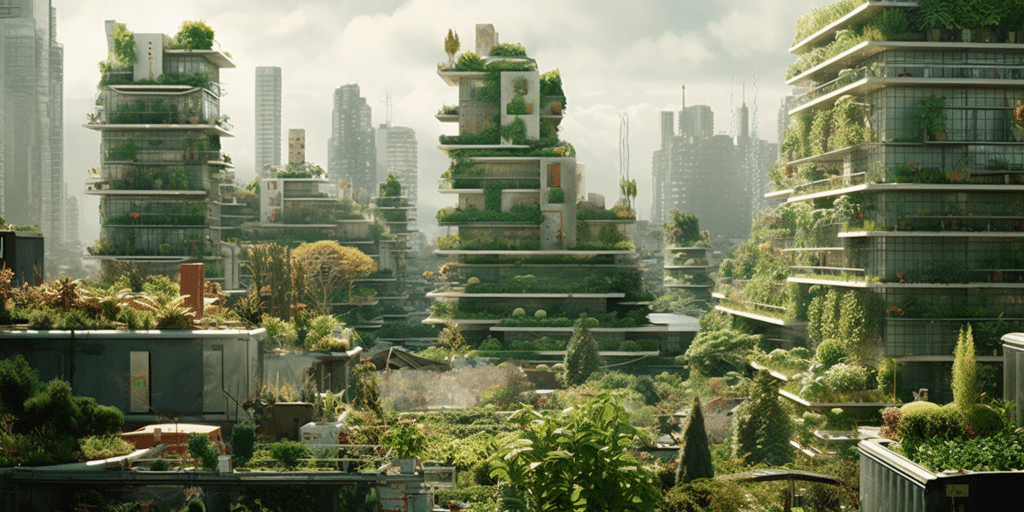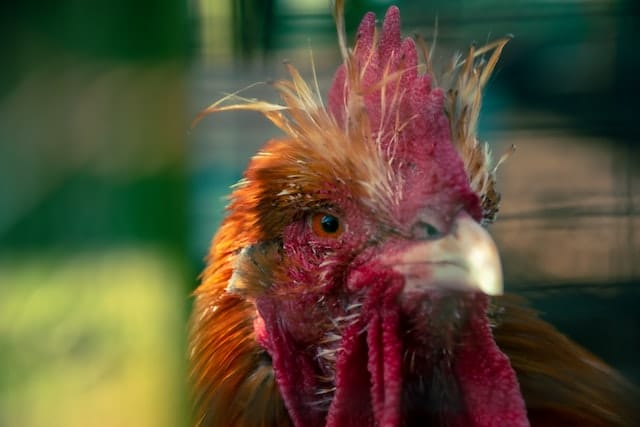Introduction – Homesteading In The City
Homesteading in the city is a concept that has been gaining popularity in recent years, particularly in urban areas. It is a lifestyle that focuses on being self-sufficient and sustainable by utilizing sustainable practices and renewable resources – which as a consequence is consistent with reducing carbon footprints that is the focus of ShrinkThatFootprint.

Urban homesteading is based on the idea of living simply and with minimal impact on the environment. Some of the practices involved in urban homesteading include gardening, composting, canning, animal husbandry, and renewable energy.
The idea of urban homesteading is appealing for many reasons. It allows people to be in control of their own food production and become more self-sufficient. It also allows people to reduce their carbon footprint by using renewable resources and sustainable practices. It allows people to eat healthier, fresher food and potentially save money by growing and preserving their own food.
Top 7 Ideas For The Urban Homestead

1. Gardening: Gardening is one of the most popular activities in urban homesteading. It allows people to grow their own fruits, vegetables, herbs, and spices in their own backyard. This can be done in a variety of ways, such as raised beds, containers, and in-ground gardens. Gardening is an important activity for urban homesteaders because it allows them to grow their own food, reducing their reliance on store-bought produce.
2. Composting: Composting is another key activity for urban homesteaders. It allows them to reduce their waste and put it to good use. Composting can be done in a variety of ways, such as vermicomposting, tumbler composting, and backyard composting. For people who live in small apartments, depending on the availability of a balcony, a small apartment composting bin is recommended. It is an important activity for reducing the amount of waste that goes into landfills and can be used as a fertilizer for gardening.
3. Canning: Canning is another popular activity for urban homesteaders. It allows them to preserve their homegrown produce for later use. Canning is an important activity for urban homesteaders because it allows them to store their food for longer periods of time, reducing their reliance on store-bought produce. This activity is also known as jarring.
4. Animal Husbandry: Animal husbandry is an important activity for urban homesteaders. It allows them to raise animals, such as chickens and goats, for their eggs and milk. Animal husbandry can be done in a variety of ways, such as raising chickens in a coop or goats in a pen.
5. Renewable Energy: Renewable energy is an important part of urban homesteading. It allows people to reduce their reliance on fossil fuels and create their own energy. Renewable energy can be created in a variety of ways, such as solar panels, wind turbines, and geothermal systems.
6. Rainwater Harvesting: Rainwater harvesting is a great way to reduce water use and save money. By collecting and storing rainwater, you can use it for watering gardens and plants, washing clothes, and other uses.
7. Beekeeping: Beekeeping is an excellent activity for urban homesteaders. It allows you to raise bees for honey and pollination. It provides an important service for the environment by helping to pollinate plants and flowers.
Benefits Of Homesteading In The City
Urban homesteading is an excellent way to reduce your carbon footprint. By utilizing renewable energy sources and sustainable practices, such as composting, you can reduce the amount of energy you use and, in turn, your overall carbon footprint. By growing and preserving your own food, you can reduce the amount of energy used in transportation and processing of store-bought produce.
Urban homesteading also helps you eat healthier, fresher food. By growing your own food, you can ensure that it is free of pesticides and other chemicals. You can store your homegrown produce for longer periods of time and reduce your reliance on store-bought produce, which can often be loaded with preservatives and other additives.
Urban homesteading can also help you save money. By growing and preserving your own food, you can reduce your reliance on store-bought produce, which can often be expensive. If you utilize renewable energy sources, you can reduce your energy bills and save even more money.
Challenges Of Homesteading In The City
One of the main challenges of urban homesteading is the limited space available. In an urban environment, it can be difficult to find the space to have a large garden or raise animals. The limited space can make it difficult to install renewable energy sources, such as solar panels or wind turbines.
Another challenge of urban homesteading is the regulations and restrictions that can be imposed by local governments. For example, many cities have laws regarding the number of animals that can be kept in a certain area and the size of gardens that can be planted. Some cities have restrictions on the types of renewable energy sources that can be installed.
A third challenge is that urban homesteading is a time-consuming activity. It requires a significant amount of time to maintain a garden, care for animals, and install renewable energy sources. It requires time to learn the skills necessary to be successful at urban homesteading.
As the setting becomes more urban, the challenges of urban homesteading can become more pronounced. With limited space available in an urban environment, it can be difficult to find the space necessary to have a large garden or raise animals.
Local governments may have restrictions and regulations that can make it difficult to install renewable energy sources. These challenges can be exacerbated in an urban setting and make it more difficult to be successful with urban homesteading.
You will find that on the spectrum from rural to dense urban settings, there will be accessible and inaccessible ideas on our list.
Do Not Confuse With The Urban Homesteading Program
The Urban Homesteading Program from the Federal Government HUD is a program that seeks to address the issue of homelessness by providing housing opportunities to homeless individuals and families.
This program is unrelated to urban homesteading, which is a lifestyle that focuses on being self-sufficient and sustainable by utilizing sustainable practices and renewable resources.
While both concepts can help people become more self-sufficient, they are distinct and serve different purposes.
The Urban Homesteading Program leverages willingness to dwell and improve in a vacant space, while urban homesteading focuses on utilizing sustainable practices and renewable resources to reduce one’s carbon footprint and become more self-sufficient.
Conclusions – Homesteading In The City
Urban homesteading can be an excellent way to reduce your carbon footprint, eat healthier, fresher food, and save money.
It allows you to be in control of your own food production and become more self-sufficient. It allows you to reduce your reliance on store-bought produce and utilize renewable energy sources.
Urban homesteading is an increasingly popular concept that can be beneficial in many ways. It can be challenging, however, due to the limited space available, regulations and restrictions, and time commitment.
Nevertheless, the benefits of urban homesteading outweigh the challenges and make it an appealing concept for many people.
